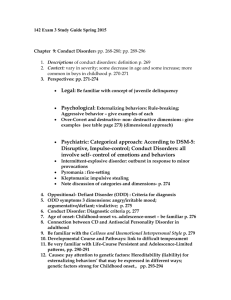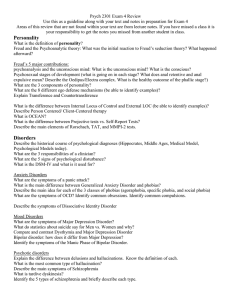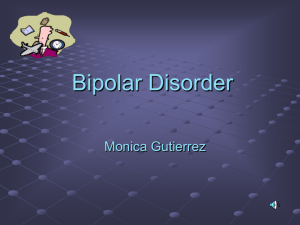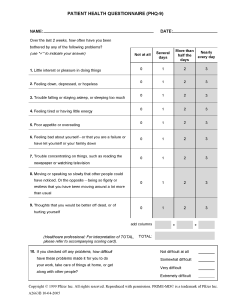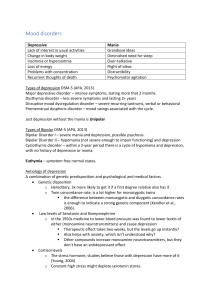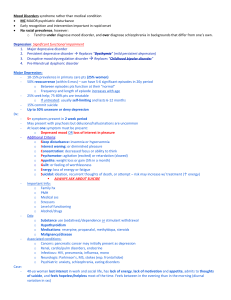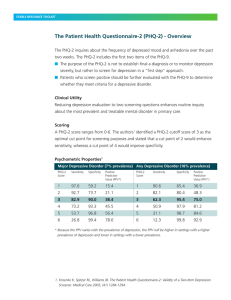Legal:
advertisement
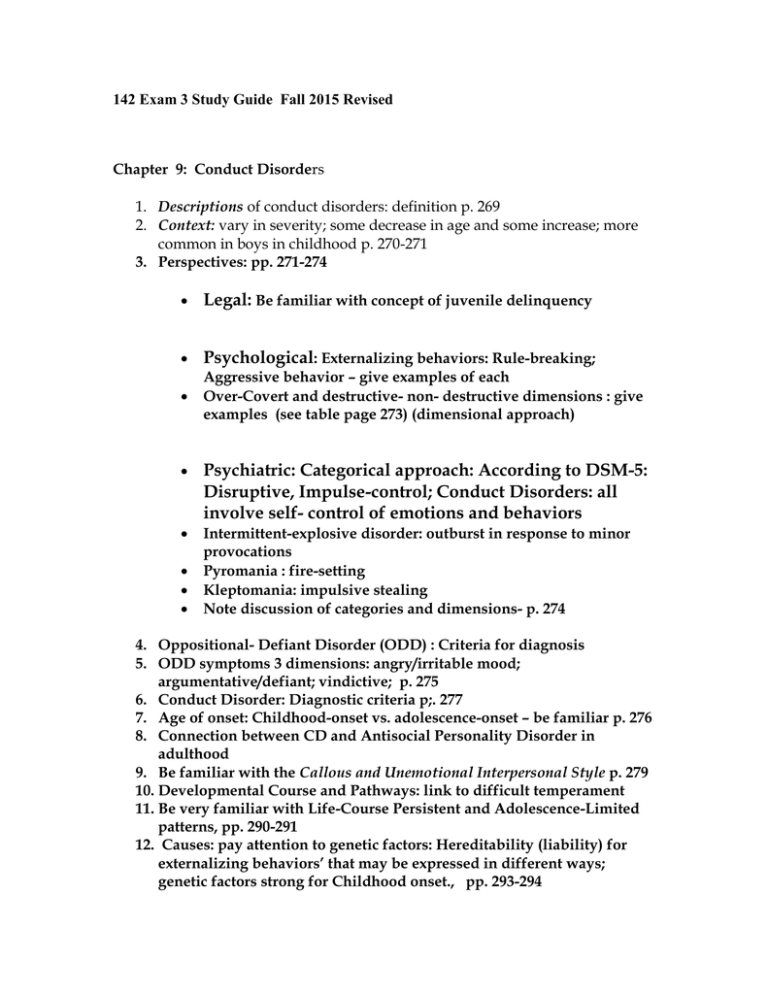
142 Exam 3 Study Guide Fall 2015 Revised Chapter 9: Conduct Disorders 1. Descriptions of conduct disorders: definition p. 269 2. Context: vary in severity; some decrease in age and some increase; more common in boys in childhood p. 270-271 3. Perspectives: pp. 271-274 Legal: Be familiar with concept of juvenile delinquency Psychological: Externalizing behaviors: Rule-breaking; Aggressive behavior – give examples of each Over-Covert and destructive- non- destructive dimensions : give examples (see table page 273) (dimensional approach) Psychiatric: Categorical approach: According to DSM-5: Disruptive, Impulse-control; Conduct Disorders: all involve self- control of emotions and behaviors Intermittent-explosive disorder: outburst in response to minor provocations Pyromania : fire-setting Kleptomania: impulsive stealing Note discussion of categories and dimensions- p. 274 4. Oppositional- Defiant Disorder (ODD) : Criteria for diagnosis 5. ODD symptoms 3 dimensions: angry/irritable mood; argumentative/defiant; vindictive; p. 275 6. Conduct Disorder: Diagnostic criteria p;. 277 7. Age of onset: Childhood-onset vs. adolescence-onset – be familiar p. 276 8. Connection between CD and Antisocial Personality Disorder in adulthood 9. Be familiar with the Callous and Unemotional Interpersonal Style p. 279 10. Developmental Course and Pathways: link to difficult temperament 11. Be very familiar with Life-Course Persistent and Adolescence-Limited patterns, pp. 290-291 12. Causes: pay attention to genetic factors: Hereditability (liability) for externalizing behaviors’ that may be expressed in different ways; genetic factors strong for Childhood onset., pp. 293-294 13. Be familiar with neurobiological factors; The Behavioral Activation System and Behavioral Inhibition system; Also note low cortical arousal and low autonomic reactivity (deficits in the stress reaction) may lead to fearlessness and pleasure-seeking temperament (pp. 295-296). Chapter 10: Depression and Bipolar Disorders pp. 311-323; 332-339; 347-8 1. Be familiar with the terms: Anhedonia; Dysphoria; Irritability; mania; euphoria; bipolar p. 311 2. Be familiar with the history of depression in children and with the concept of masked depression and anaclitic depression. (pp. 213-313) 3. Be familiar with the clinical picture of depression at differing ages. 4. Depression as a symptom, syndrome, and disorder. P. 314 5. Be familiar with the classification of depressive disorder: Major depressive disorder (MDD) Persistent depressive disorder (PDD) previously dysthymia Disruptive mood dysregulation disorder (DMDD) 6. Note criteria for diagnosis and specifiers table p. 316 7. Co-morbidity and gender pp. 317-319 8. Causes of depression: Genetic and family risk: pp. 333-334 9. Neurobiological influences; pp.335-336 10. Emotional regulation: p. 339 11. Bipolar p. 347-354
